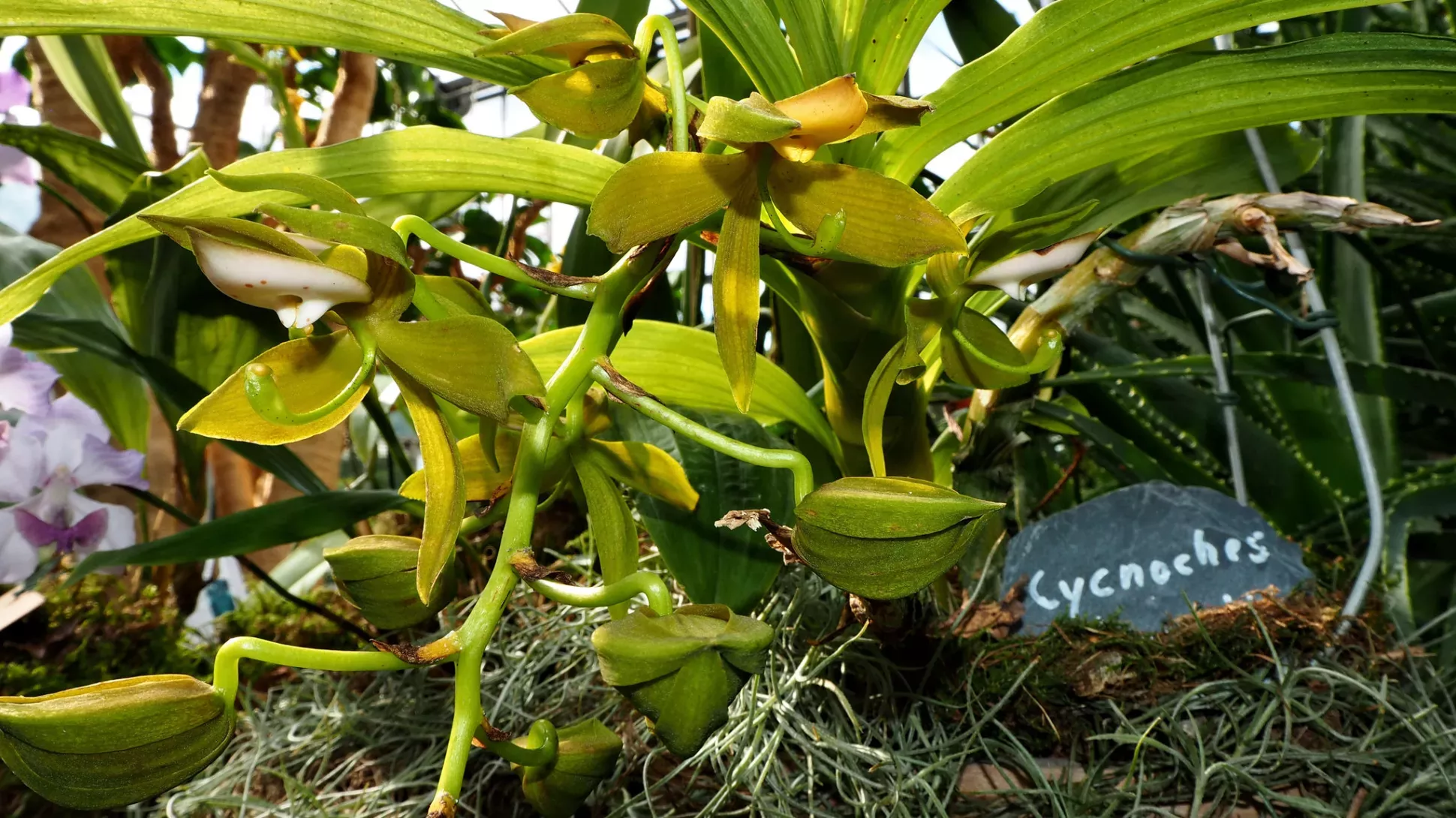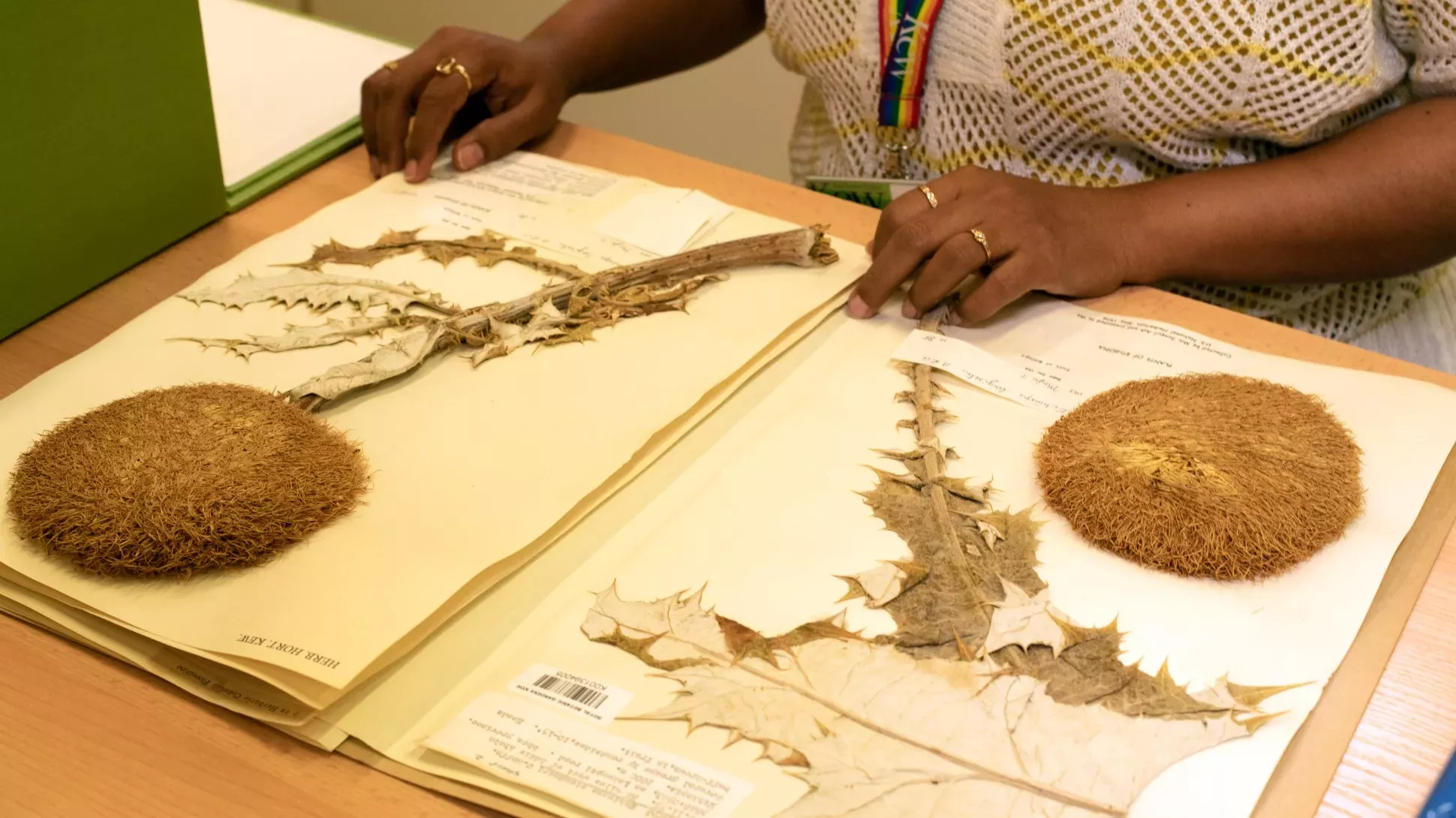12 September 2023
Celebrating Queer Nature
This autumn, join us for a month-long festival celebrating the diversity and beauty of plants and fungi.

The natural world is anything but straightforward.
Take flowering plants, for instance. Many have flowers with both stamens and a stigma, sometimes referred to as the male and female parts of the flower.
Meanwhile, other plant species have male and female individuals that only grow one type of flower or one type of cone on a single plant. The monkey puzzle tree (Araucaria araucana), for instance, grows with either pollen cones or seed cones.


There are even some plants that grow separate male and female flowers or cones on the same plant.
And for plants and fungi, sex isn’t always static. Ruizia mauritiana can change the type of flowers it produces depending on the temperature of the environment. In hot conditions it grows male flowers, while in cooler conditions it produces female ones.
Similarly, some species of Cycnoches and Catasetum orchids can produce separate male and female flowers on the same plant, depending on how much sunlight they receive.
The seeds of most plants are formed by the fusion of a male and female reproductive cell. But for some species, seeds can be produced directly from the female reproductive cell, a process called apomixis.
And that’s not even mentioning fungi. While they don’t have sexes in the way that we might recognise them, each fungus has a mating type which needs to be compatible. In some species of fungi, there can be thousands of different mating types!
The more we discover, the more we learn that nature is wildly diverse in so many ways.


Introducing Queer Nature
This autumn, we’re celebrating the diversity and beauty of plants and fungi with an inspiring new festival, Queer Nature, at Kew Gardens.
Step inside Kew’s iconic Temperate House to discover a large-scale suspended artwork at its centre.
Created by New York based artist Jeffrey Gibson, House of Spirits is an immersive installation fusing vibrant colour and pattern.
The intricately-crafted collage of printed fabrics incorporates botanical illustrations alongside language and patterns informed by Gibson’s own perspectives on queerness, and the endless diversity of plants and nature.
Gibson draws upon his Choctaw-Cherokee heritage as well as queer theory, politics and art history as part of his multi-disciplinary practice.

Breaking the binary
Elsewhere in the Temperate House, visitors can discover a newly-designed garden titled Breaking the Binary, created by Patrick Featherstone in collaboration with Kew’s Youth Forum.
Exploring themes of plant classification and categorisation, this living horticultural installation celebrates the infinite potential of nature.
Featherstone was recently involved in a Gold Medal-winning garden at Chelsea Flower Show 2023, and has worked with a group of 14-18 year-olds from the Youth Forum to design this striking horticultural display.
The process of co-creating a garden at Kew offers an incredible opportunity for members of the Youth Forum to develop new skills within the worlds of design and horticulture.

Queer voices
British artist and designer Adam Nathaniel Furman will design an immersive space to house a film-based installation, featuring interviews with over a dozen horticulturists, scientists, authors, drag artists and activists as they explore what Queer Nature means to them.
This series of short videos and reflections feature experts from across Kew, alongside others including artist Jeffrey Gibson and Sixto-Juan Zavala who leads on projects such as Queer Botany.

The Temperate House
Home to the Queer Nature festival this autumn, Kew’s Temperate House is the world’s largest surviving Victorian glasshouse, and is home to some of the world’s rarest and most threatened plants.
Inside the house, you’ll find the Ruizia mauritiana, which is now believed to be extinct in the wild. Kew is now the only place in the world with it in cultivation.
You’ll also be able to see species of Banksia, a group of Australian wildflowers that begin as female, then shift over time to become male.

Nature and LGBTQ+
Plants and fungi have also been used as symbols for LGBTQ+ groups throughout history.
The classical Greek poet Sappho described a female lover wearing garlands of violets, creating a symbol for lesbian and bisexual women that has endured for centuries.
The green carnation became a symbol for homosexuality in the early 20th century, due to Oscar Wilde’s wearing of it, at a time when being openly gay was still a criminal offence.
Since the mid-20th century, the colour lavender was used to represent gay communities across the world.
Looking at plants and fungi through a new lens sheds a new light on the complexity and infinite possibilities of nature, highlighting the vital importance of conserving biodiversity and protecting the natural world.
That's why it's the perfect time to celebrate Queer Nature. Why not join us this autumn and discover the true diversity of the natural world?
